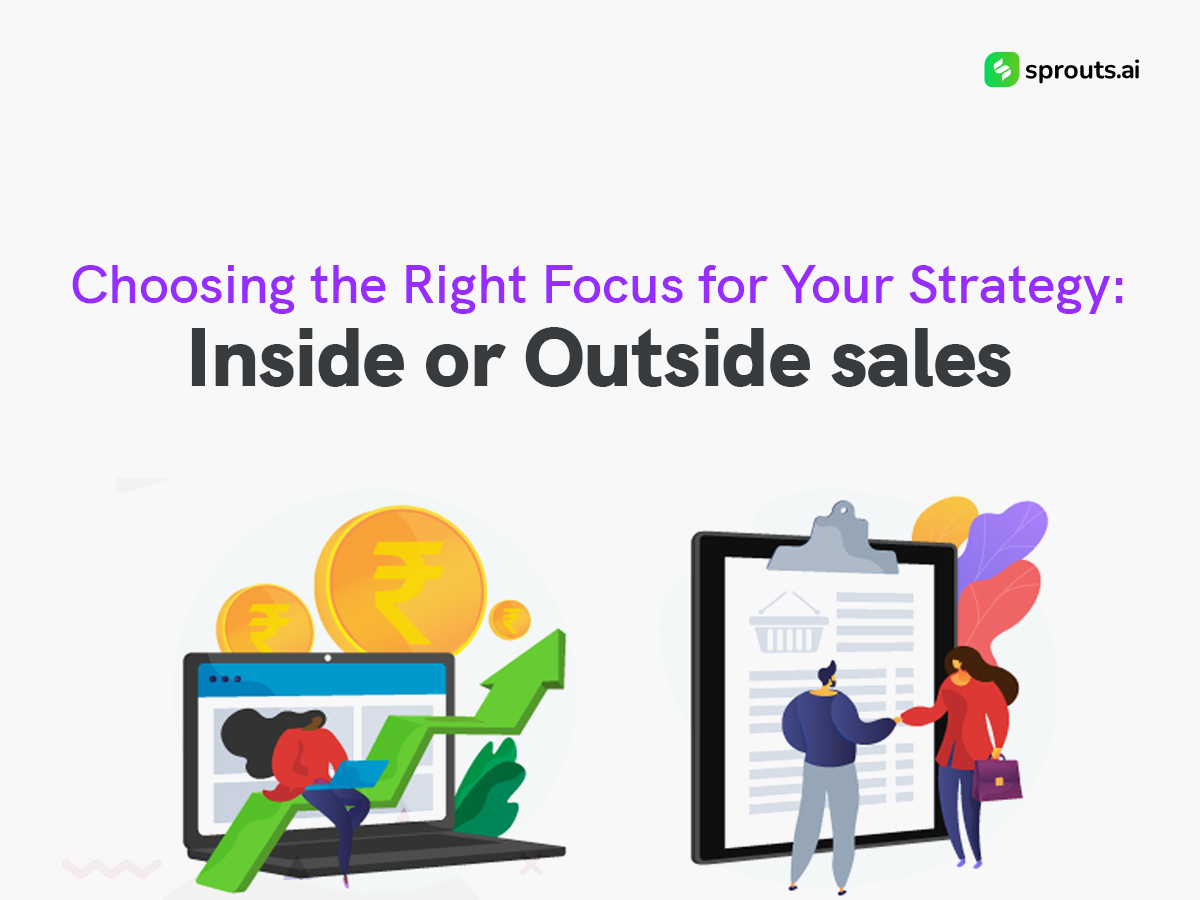Every B2B business thrives on a well-oiled sales engine. But the question remains: how do you attract the right customers? This blog explores the two main strategies for fueling your sales engine: inbound and outbound sales. We’ll explore their unique strengths, potential drawbacks, and how they can impact your overall B2B strategy. By understanding these key differences, you can build a sales approach that propels your business towards success. Let’s get started and discover which approach best fits your specific goals and customer base.
Understanding Inbound Sales:
Inbound sales is a customer-centric approach that focuses on attracting prospects through valuable content, personalized interactions, and nurturing relationships. Inbound sales aligns with the modern buyer’s journey, which often begins with researching solutions independently before engaging with sales representatives.
One of the key components of inbound sales is content marketing. By creating informative blog posts, engaging videos, and educational resources, businesses can establish themselves as thought leaders and attract potential customers who are actively seeking solutions to their problems. Another pillar of inbound sales is lead nurturing. Rather than bombarding prospects with cold calls and generic sales pitches, inbound sales teams prioritize building trust and rapport over time. This involves understanding the prospect’s needs, addressing their concerns, and providing tailored solutions that add value.
Inbound sales leverages technology to streamline processes and enhance the customer experience. Customer relationship management (CRM) systems, marketing automation platforms, and analytics tools play crucial roles in tracking interactions, analyzing data, and optimizing strategies for maximum impact.
The Benefits of Inbound Sales:
- Cost-effectiveness: Inbound sales often require lower upfront investment compared to outbound methods like cold calling or direct mail campaigns. By creating evergreen content that continues to attract leads over time, businesses can generate organic traffic and reduce acquisition costs.
- Higher quality leads: Because inbound sales focuses on attracting prospects who are already interested in the product or service, the leads generated tend to be more qualified and receptive to sales efforts. This results in higher conversion rates and a more efficient sales process.
- Long-term relationships: By prioritizing relationship-building and providing value at every stage of the buyer’s journey, inbound sales fosters long-term connections with customers. This not only leads to repeat business but also encourages referrals and positive word-of-mouth marketing.
Exploring Outbound Sales:
Outbound sales, on the other hand, takes a more proactive approach to lead generation and customer acquisition. It involves reaching out to potential prospects through methods such as cold calling, email outreach, and targeted advertising.
Traditionally associated with a more aggressive sales style, outbound sales focuses on initiating contact with prospects, identifying their needs, and persuading them to make a purchase. While this approach may seem intrusive to some, when executed effectively, outbound sales can yield impressive results. Outbound sales relies heavily on sales representatives’ ability to prospect, qualify leads, and overcome objections. It requires a thorough understanding of the product or service being offered, as well as the ability to articulate its value proposition convincingly.
Outbound sales often involves extensive prospecting efforts to identify and reach out to potential customers. This can be time-consuming and resource-intensive, requiring sales teams to carefully prioritize leads based on their likelihood of conversion.
The Benefits of Outbound Sales:
- Proactive approach: Outbound sales allows businesses to take control of the sales process by actively reaching out to potential customers. This proactive approach can be particularly effective in industries where competition is high and differentiation is key.
- Immediate results: Unlike inbound sales, which relies on organic traffic and long-term relationship-building, outbound sales can deliver more immediate results. By directly engaging with prospects and presenting compelling offers, businesses can accelerate the sales cycle and drive revenue faster.
- Scalability: Outbound sales strategies can be scaled up or down relatively easily to accommodate changes in demand or business objectives. Whether expanding into new markets or launching targeted promotions, outbound sales offers flexibility and adaptability.
Choosing the Right Focus for Your Strategy:
So, which approach is best for your business? The answer ultimately depends on a variety of factors, including your target audience, industry, resources, and objectives. Here are some key considerations to keep in mind:
- Know your audience: Take the time to understand your target audience’s preferences, behaviors, and pain points. Are they actively searching for solutions online, or do they prefer more direct communication? Tailor your approach accordingly.
- Evaluate your resources: Consider your team’s strengths, skills, and bandwidth when choosing between inbound and outbound sales. Do you have the resources to create high-quality content and nurture leads over time, or would you benefit more from a focused outbound strategy?
- Measure your results: Implement systems to track and analyze the effectiveness of your sales and marketing efforts. Monitor key metrics such as lead conversion rates, customer acquisition costs, and return on investment to gauge the success of your chosen approach.
- Stay agile: Keep an open mind and be willing to adapt your strategy based on changing market conditions, customer feedback, and internal insights. Experiment with different tactics, channels, and messaging to find what works best for your business.
Both inbound and outbound sales have their place. While inbound sales emphasizes building relationships and providing value to attract customers organically, outbound sales takes a more proactive approach by reaching out to potential prospects directly. By understanding the nuances of each approach and aligning them with your business goals, you can create a sales strategy that drives sustainable growth and success.

